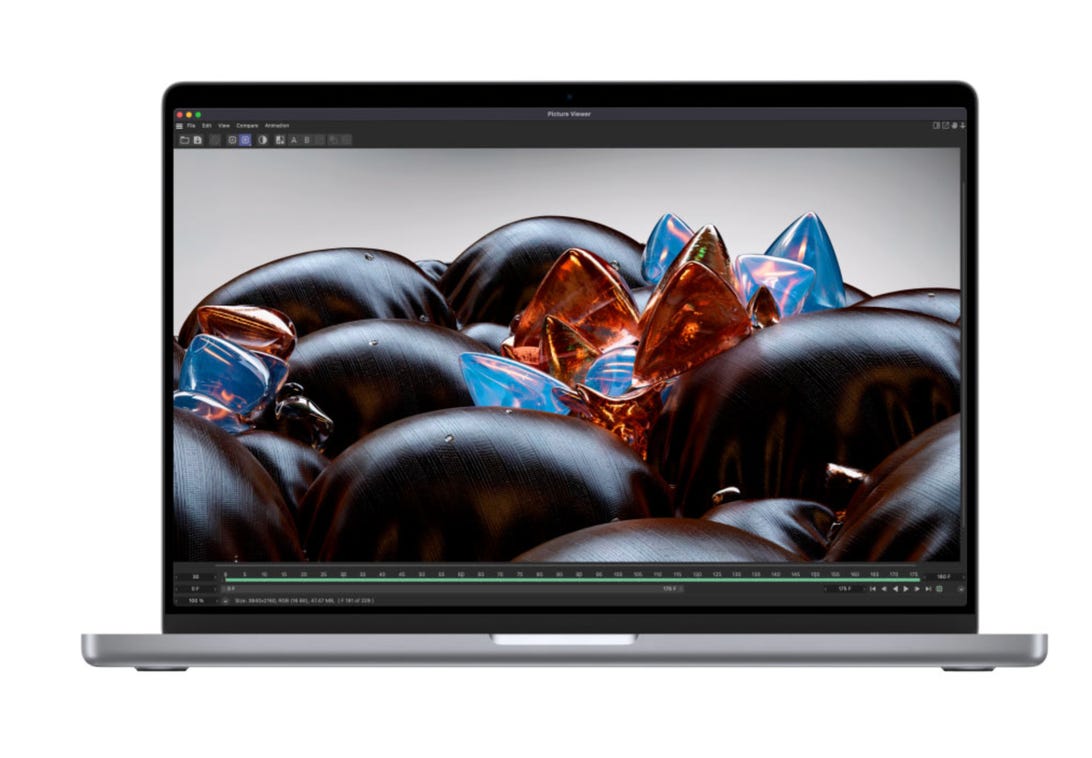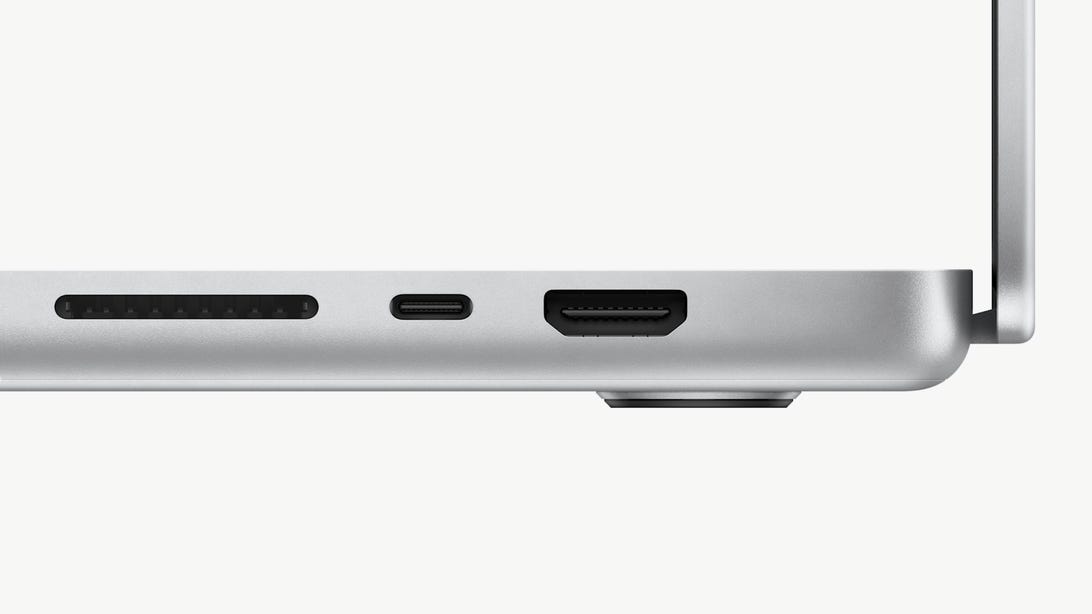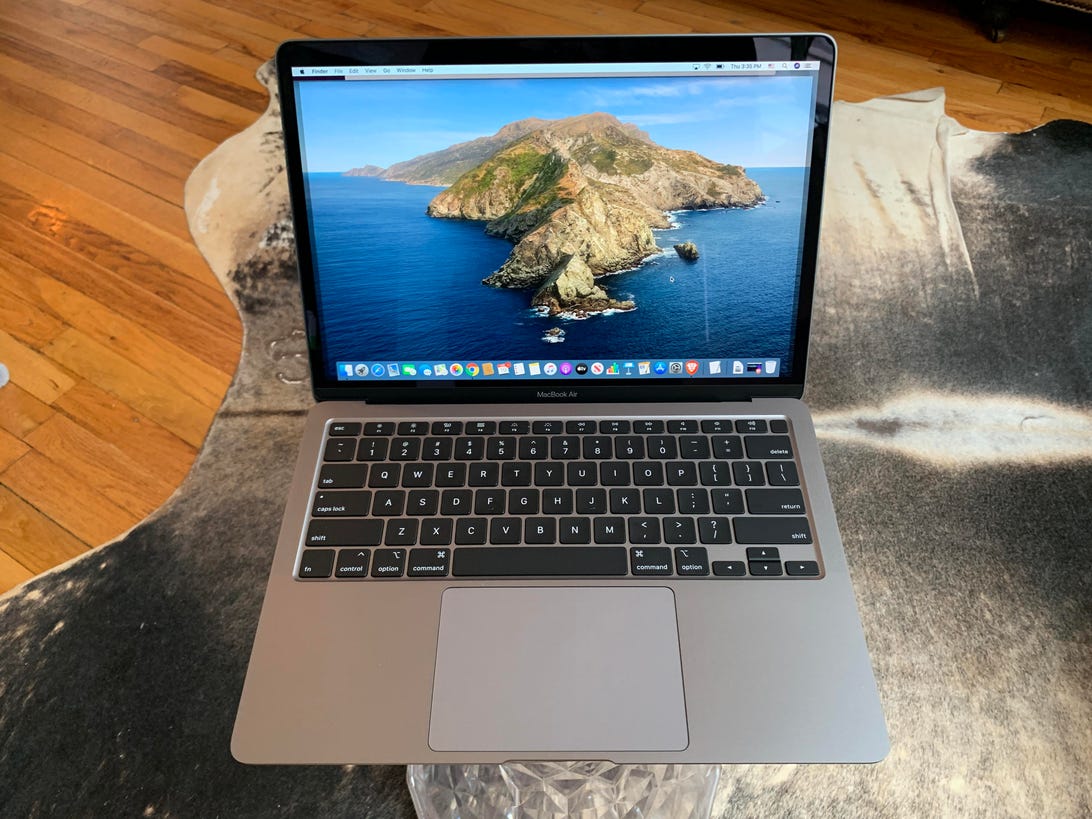
With the new 14-and 16-inch MacBook Pro models introduced Oct. 18, the entire Apple laptop line has completely shifted to Apple's own M-series chips and away from Intel. This shift means more options for new MacBook buyers to consider, as well as additional considerations about ports, screens, webcams and power -- especially graphics power.
The MacBook Pro started life in 2006, as a successor to Apple's PowerBook line of laptops, and part of the first wave of Intel-powered Macs. The Intel/Apple partnership lasted 15 years, and now we're down to the last couple of available Intel Macs, an older Mac Mini and the 21.5-inch and 27-inch iMacs. I doubt we'll see any more, as the Mac line continues to go all-in on Apple's own chips, allowing the company to control the design of the hardware, the OS and the CPU.
Last year's initial wave of M1 Macs made for some confusing buying choices. The less-expensive MacBook Air and more-expensive 13-inch MacBook Pro used almost identical M1 chips (plus a single extra GPU core), despite a $300 difference in their starting prices. The $699 Mac Mini? Same chip! The upshot at the time was that the MacBook Air remained the most universally useful choice for most people.
The new 14-inch and 16-inch MacBook Pro laptops represent a much bigger leap between the Air and Pro models. It's also a way Apple can lure in higher-end creative pros who need the graphics power -- previously only available in select Intel Macs -- for video editing, content creation, 3D work, etc. Before now, the M1 Macs were not always powerful enough for more complex workloads.
By adding the M1 Pro and M1 Max system-on-chip parts (sometimes called an SOC, or more casually referred to as the MacBook's "chip"), these really become pro-level machines, and will do a better job of attracting professional buyers, who are used to spending many, many thousands on their mission-critical work rigs.
Let's look at the current lineup and see how the new announcements have changed the buying calculations:
Current MacBooks compared
| 14-inch MacBook Pro | 16-inch MacBook Pro | MacBook Air (13-inch, M1) | 13-inch MacBook Pro (M1) | |
| CPU | M1 Pro or M1 Max | M1 Pro or M1Max | M1 | M1 |
| No. of GPU cores | 14 (up to 32) | 16 (up to 32) | 7 | 8 |
| Screen size | 14.2 | 16.2-inch | 13.3-inch | 13.3-inch |
| Screen resolution | 3,024x1,964 pixels | 3,456x2,234 pixels | 2,560x1,600 pixels | 2,560x1,600 pixels |
| Starting storage | 512GB | 512GB | 256GB | 256GB |
| Starting RAM | 16GB | 16GB | 8GB | 8GB |
| Webcam | 1080 | 1080 | 720 | 720 |
| Networking | 802.11ax Wi-Fi 6, Bluetooth 5.0 | 802.11ax Wi-Fi 6, Bluetooth 5.0 | 802.11ax Wi-Fi 6, Bluetooth 5.0 | 802.11ax Wi-Fi 6, Bluetooth 5.0 |
| Connections | Thunderbolt USB-C x3, HDMI, SDXC card, MagSafe 3 | Thunderbolt USB-C x3, HDMI, SDXC card, MagSafe 3 | Thunderbolt USB-C x2 | Thunderbolt USB-C x2 |
| Weight | 3.5lbs | 4.7lbs | 2.8 lbs | 3.0 lbs |
| Starting price | $1,699 | $2,499 | $999 | $1,299 |
The new models
14-inch MacBook Pro
This is the first brand-new screen size for a MacBook since the 15-inch Pro went to 16 inches in 2019 (the iMac added a 24-inch version this past summer). Along with that, it actually gets both thicker and heavier. The trade-off is that the thicker body allows for all those extras, like the resurrected HDMI and SD card ports.
The bigger screen covers even more of the top panel, with thinner bezels. So thin, in fact that the webcam has been reduced to a notch, cutting into the display itself, much like on an iPhone. So far, I've heard mixed reactions to that, but I think the better 1080-resolution webcam more than makes up for it. I've used the 1080 webcams in the 27-inch iMac and newer 24-inch iMac, and it makes a huge difference in video meetings.
Keep in mind these shopping (or preorder, at this point) notes are based on the on-paper specs for the new MacBooks, plus my long experience testing and reviewing MacBooks, which goes back to the very first MacBook Pro in 2006 and the first MacBook Air in 2008. I'm sure to have additional notes once I get to try these systems out in person, and I'm especially interested in whether the increased size and weight will feel like a burden.
If you're more about portability than the big screen, especially if you output to a larger display, the 14-inch feels (on paper) like the sweet spot for portability and power. Read more about the 14-inch MacBook Pro here.

16-inch MacBook Pro
Just about everything I said about the 14-inch MacBook Pro applies here as well. The two devices are remarkably similar, and you get both with either the M1 Pro or the M1 Max. Both also share the same heat pipe cooling system. New ports? The same. Notch-based 1080 camera? Same. No more Touch Bar? Same. The main difference, spec-wise, is that the 14-inch starts with some less-powerful M1 options, with a base of eight CPU and 14 GPU cores. The 16-inch starts with 10 CPU and 16 GPU cores in its version of the M1 Pro. Both support up to the 10 CPU and 32 GPU cores version of the M1 Max chip.
To spec out a 14-inch and 16-inch MacBook Pro with the closest matching specs, you end up with that M1 Pro 10 CPU/16 GPU chip, plus 16GB RAM and 512GB storage. On the 14-inch version, that will cost $2,299. In the 16-inch, it's $2,499. So you basically pay a $200 premium for a two-inch-larger screen.
And it could certainly be worth that. The previous 16-inch MacBook Pro was pretty impressive to look at. As opposed to the power-plus-portability pitch of the 14-inch Pro, the 16-inch feels like it's for people who want a bit of the feel of a big-screen desktop, without actually having a desktop. Read more about the 16-inch MacBook Pro here.
The existing models
MacBook Air (13-inch, M1)
At first, I was somewhat wary of jumping into an M1 MacBook Air. I was worried about compatibility issues with things like Adobe software and about overall performance compared to the trusted old Intel MacBook Air.
But after nearly a year, I can say the Intel-to-M1 transition has been relatively smooth. The best thing I can say about the M1 chip is that it's largely transparent to the everyday MacBook Air user, which is exactly what you want from a big under-the-hood change like this.
Apple's Rosetta emulation for software not yet optimized for M1 still runs most programs just as well as it did under Intel chips. Key Adobe software and other creative apps were updated for native M1 support, with more on the way. I've run into occasional problems with gaming apps or some drivers and support apps for things like a label printer and some 3D printing software.

13-inch MacBook Pro (M1)
The first M1 MacBook Pro was a tougher sell than the Air. There was nothing wrong with it, but the line between the Pro and Air wasn't as distinct as it might have been. The main things that stood out about the 13-inch M1 Pro versus the M1 MacBook Air are the Touch Bar, a slightly brighter screen and better cooling (it had a fan).
With the new Pro models, the 13-inch feels even further out to sea, unlikely to be updated ever again. The good news is, if you were going to buy a 13-inch Pro, the MacBook Air is pretty much just as good and can be configured with more RAM and storage to suit your needs. The bad news is, if you want to shift from 13-inch Pro to 14-inch Pro, the starting price jumps up by $600.
My default advice remains the same, at least for now. Most mainstream laptop shoppers should start with the MacBook Air and see if that's enough laptop for them. If the ports, better camera or graphics power of the M1 Pro and M1 Max laptops feels like something you need, the decision comes down to portability vs. screen size. And if you're the one Touch Bar die hard out there, you'd better pick up the 13-inch MacBook Pro while you still can.
We hope to review the new MacBooks soon; they go on sale October 26.
Read more:
"now" - Google News
October 19, 2021 at 05:36AM
https://ift.tt/2YXQJ3G
Which MacBook should you buy now? - CNET
"now" - Google News
https://ift.tt/35sfxPY
Bagikan Berita Ini















0 Response to "Which MacBook should you buy now? - CNET"
Post a Comment